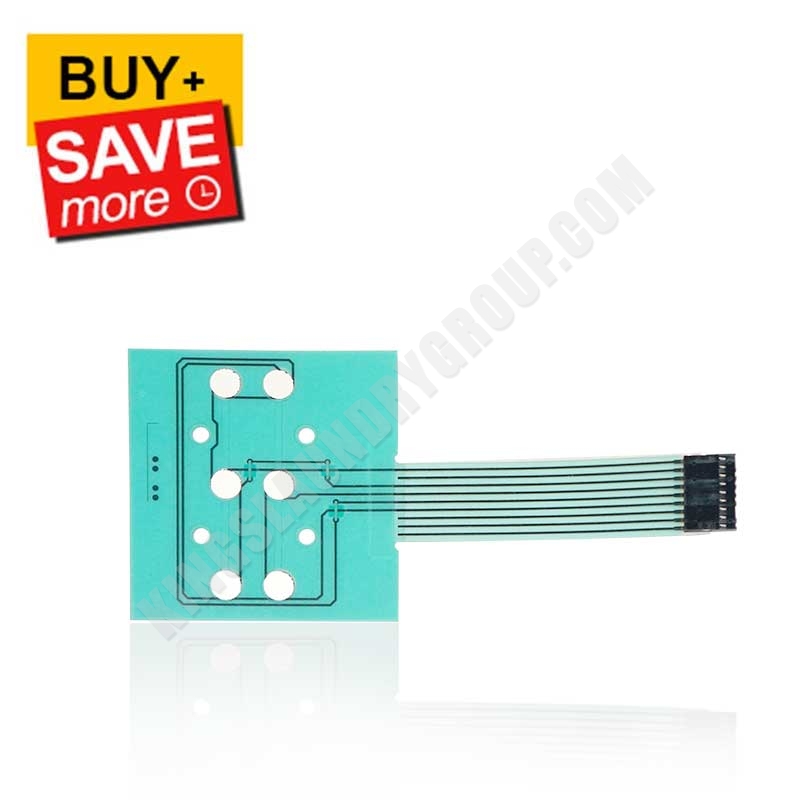How Membrane Layer Switches Contribute to the Durability of Electronic Control Panels
Membrane buttons play a critical duty in enhancing the sturdiness of electronic control panels, mainly through their multi-layered construction which gives efficient protection against ecological aspects such as wetness and dirt. The lack of relocating parts considerably reduces the chance of mechanical failings, making membrane switches over suitable for demanding applications.
Interpretation of Membrane Buttons

Membrane switches are developed to be slim and lightweight, making them suitable for applications where space is limited. They can be made in numerous shapes, sizes, and colors, supplying flexibility in style that fulfills visual and functional demands. Furthermore, membrane layer buttons can include numerous modern technologies, such as tactile feedback and LED signs, improving individual experience.
As a result of their building and construction, membrane layer buttons are typically immune to dust, wetness, and general wear, adding to their sturdiness popular settings. Their seamless style not only assists in very easy cleansing yet additionally lessens the threat of mechanical failing, making them a recommended option for makers looking for trustworthy interface in their digital control panels.
Protection Against Ecological Variables
The style of membrane switches inherently gives a level of security against numerous ecological factors, which is important for maintaining capability in tough problems - Membrane Switch. These switches are generally created with layers of flexible products that secure inner parts from wetness, dust, and impurities. By enveloping the circuitry, membrane layer switches lessen the danger of short circuits and deterioration, which can substantially impair efficiency
Moreover, making use of durable adhesives and sealers during production improves their resistance to ecological difficulties. Membrane buttons can sustain exposure to chemicals and solvents, making them ideal for markets such as food handling and health care, where hygiene and sanitation are paramount. Their smooth surface layout also protects against the accumulation of dirt and bacteria, facilitating less complicated cleaning and upkeep.
Temperature level fluctuations are an additional environmental issue, and membrane switches are engineered to operate efficiently throughout a wide variety of temperature levels (Membrane Switch). This adaptability makes sure that control board remain functional in numerous setups, from commercial environments to consumer electronic devices
Effect On User Communication
User interaction with digital control board is substantially affected by the layout and performance of membrane buttons. These buttons provide a tactile interface that enhances the total user experience, enabling instinctive navigating and control. Their receptive nature makes sure that users get instant comments upon activation, which is critical for jobs requiring accuracy and performance.
In addition, the smooth surface of membrane switches facilitates simple cleansing and upkeep, advertising individual self-confidence in the dependability of the user interface. This sanitation is particularly important in this page environments where hygiene is critical, such as medical or food processing settings. Additionally, the compact and lightweight design of membrane layer switches over adds to the visual allure of control board, urging customer interaction with a contemporary and smooth look.
Additionally, the integration of visual components, such as published symbols and backlighting, aids individuals promptly identify features, lowering the company website learning contour related to new equipment. Therefore, customers can run devices better, leading to raised productivity and fulfillment. In summary, membrane layer switches play a pivotal duty in improving individual communication by integrating functionality, looks, and ease of usage, ultimately bring about enhanced functional efficiency.
Layout Versatility and Customization
Style adaptability and personalization are essential elements of membrane buttons, allowing producers to customize electronic control board to specific applications and individual demands. This flexibility enables the assimilation of various style elements, such as colors, graphics, and appearances, which can enhance the aesthetic appeal and individual involvement of the control panel.
Membrane buttons can be personalized in dimension and shape, fitting a vast array of gadgets and applications, from commercial equipment to customer electronics. This adaptability guarantees that makers can develop user-friendly interfaces that align with user assumptions and functional demands. In addition, the ability to incorporate special attributes such as backlighting or tactile feedback additionally boosts use, allowing for a more interactive experience.
Additionally, the manufacturing process for membrane layer switches over sustains the rapid prototyping of designs, enabling producers to repeat and improve their principles quickly. This capability not only accelerates the development timeline yet likewise makes certain that the end product fulfills certain functional and aesthetic standards.

Cost-Effectiveness and Longevity
Cost-effectiveness and long life are considerable advantages of membrane switches, making them an attractive alternative for suppliers and end-users alike. These buttons are normally much less costly to create than conventional mechanical buttons, largely because of their streamlined production processes and the decreased number of parts needed. This cost benefit prolongs not only to first manufacturing however also to lasting functional expenditures, as membrane switches usually call for less upkeep and have a lower failure price.
Additionally, the longevity of membrane layer changes adds to their overall worth. Constructed from sturdy products, they why not check here are resistant to ecological factors such as wetness, dust, and chemicals, which can cause premature wear in various other switch kinds. The absence of moving components reduces mechanical failing, enabling membrane layer changes to keep functionality over extended periods.
This toughness is particularly beneficial in applications needing regular performance under requiring conditions, such as clinical devices and industrial tools. Ultimately, the mix of cost-effectiveness and longevity makes membrane layer changes a financially practical selection for makers, providing trustworthy options that endure the examination of time while optimizing monetary considerations.
Conclusion
In verdict, membrane layer switches substantially boost the durability of digital control panels via their durable building and protective functions - Membrane Switch. Generally, membrane switches stand for a trusted and economical option for improving the longevity and functionality of digital control systems.
Comments on “The Full Guide to Membrane Switch Modern Technology and Its Applications”